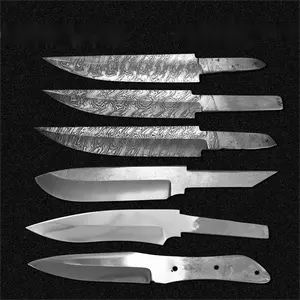
UN77 Wide Selection Fix Knife Blades Stainless Steel Blank Blades For Diverse Fix Blade Knives Making

Customized 2500 Sponge Cutting CNC Vibratory Cutting Knives CNC Bandsaw Blades SK5 Steel Anisotropic Saws



















Blade blanks are the foundational component for a variety of cutting tools, serving as the unshaped steel that will be refined into specialized knives. These blanks are crafted to cater to different cutting needs, from culinary arts to outdoor activities. Understanding the diversity and potential of blade blanks is essential for professionals seeking to customize their cutting instruments.
The application of blade blanks is extensive, ranging from kitchen cutlery to specialized tools. Chef knife blanks are popular for their robustness, designed to withstand the rigors of a professional kitchen. In contrast, paring knife blanks are intended for precision tasks such as peeling and trimming. For those in the culinary field, the right blank can be transformed into a tool that meets the exacting demands of food preparation.
The features of blade blanks vary, with some offering a tapered spine for intricate work, while others boast a broad heel suitable for heavier chopping tasks. The materials used in these blanks are crucial, with stainless steel being a common choice for its durability and resistance to corrosion. Carbon steel is another option, valued for its ease of sharpening and edge retention. The selection of a blade blank goes beyond mere shape—it's about finding the right balance of material properties for the intended use.
Opting for blade blanks provides the user with the advantage of customization. One can shape the edge, handle, and overall ergonomics to suit specific tasks or personal preferences. This bespoke approach to knife making ensures that the end product is as unique as the craftsman's skill and the user's needs.
When selecting blade blanks, it is important to consider the intended application. For instance, a filleting knife blank would be slender and flexible, designed to maneuver around bones and delicate flesh. On the other hand, a butcher knife blank would be more robust, intended for the heavy-duty task of cutting through meat and sinew. The thickness, length, and steel type are all critical factors that influence the performance of the finished knife.
In conclusion, blade blanks are the starting point for creating tools that are both functional and personalized. Whether for culinary, outdoor, or craft purposes, the right blank can be transformed into a knife that meets the specific needs of its user. With a variety of materials and designs available, blade blanks offer an opportunity for customization that is unmatched in pre-fabricated knives.